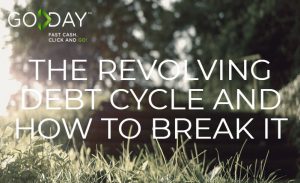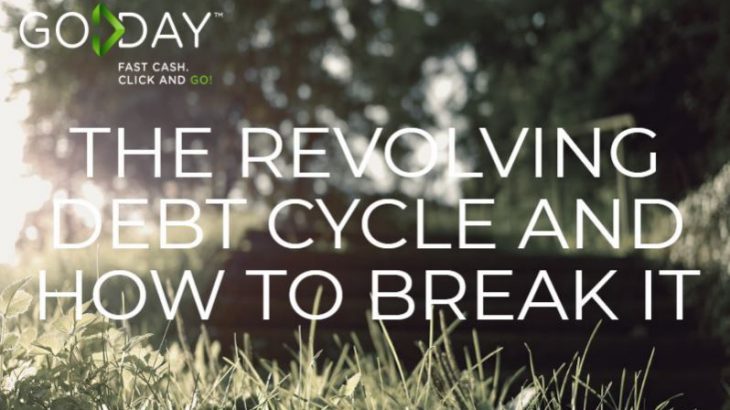
Debt is one of those words no one likes to hear. What is the first thing that comes to mind when you hear the word debt? Because there are also different kinds of debt, we are only experts when it comes to payday loans in Canada. You can have loans with the bank, a mortgage, student loans, car loans, a line of credit, credit card debt, a payday or short-term loan, the list goes on. But you would be surprised as to how many Canadians carry debt. Based off a 2017 Equifax report, consumer debt balances continue to grow. Canadians owed $1.821 trillion in the fourth quarter of 2017, up from $1.797 trillion in the third quarter with a breakdown of installment loans (10.3 per cent), auto loans (6.5 per cent) and mortgages (6.2 per cent) saw the most significant increases year over year, the report noted.
According to Investopedia debt can be defined as, “an amount of money borrowed by one party from another. Debt is used by many corporations and individuals as a method of making large purchases that they could not afford under normal circumstances. A debt arrangement gives the borrowing party permission to borrow money under the condition that it is to be paid back at a later date, usually with interest.” And do you know how much debt you have or how much you owe and to where? As much as debt is common, there is a difference between paying down your debt and accumulating it. People also describe the revolving debt cycle as being stuck on a hamster wheel that keeps spinning and you never know when it’s going to stop. Especially when it comes to your money, you never know when the unexpected could happen and more money has to out, causing the cycle to continue. Every time you think you’ve paid off a good chunk of your debt, something else comes along and then you’re right back on the wheel and what feels like the never-ending cycle. That’s why we break down some of the key factors of how you may have got yourself stuck in the revolving debt cycle and how to break it.
Are you paying off one thing and moving money from on account to another to cover the next bill? Are you borrowing money to pay off something else? This happens more often than you would think and it is in crunch times like this that GoDay is here to help you bridge the gap. Are you paying attention to how often you have to do this because this should be setting off those financial alarm bells. Many people use GoDay or other payday/short-term loans and services as their last resort, which is why we are here, to get you through your financial hurdles, not to get you further away from your financial goals. But it is when you become reliant on these services mixed with your other financial means that debt can start to accumulate. So before jumping into debt that you can’t afford to repay, it’s time to cut yourself off and start from scratch.
But it’s not just payday loans you have to worry about when it comes to your debt. Have you ever been concerned about swiping your card and it being declined? This is never a good feeling and one of those things you shouldn’t have to worry about. Maxing out your credit cards is never a good thing since the interest you pay on credit card charges is one of the highest out there. Let’s face it, we all dread that time of the month, when your credit card bill comes in and the shock of how much you’ve overspent this month. You have blown your budget and are now dipping into savings to pay off the balance, or you’re not paying the entire balance off and are now accumulating interest. It’s a revolving cycle and a very tough one to break. According to a report released in 2015, nearly half of all Canadian credit card holders (46 per cent) are carrying credit card debt. So what does this mean? It means you’re not alone. But being stuck in the credit card cycle can have an impact on your credit score causing future financial implications and is one way to know if you’re in too much debt.
When it comes down to getting out of your revolving debt, you need to be able to have all your financials in a picture in front of you. Because your method right now isn’t working if you’re finding yourself in a financial crunch. How do you keep track of your funds? Do you have a budget currently in place? If so, what helps keep your budget on track? When it comes to creating a budget, there are many things you need to keep in mind to make sure you’re not missing out on any opportunities to save (because you need to still be doing that too). It’s one thing to put all this effort into budgeting, but it’s another to actually follow through on your financial goals. Because everyone’s financial priorities are different, no budget is ever the same. And that goes for any life changes that may affect your finances and mean you will also have to update yours. By sticking to the budget you’ve created for yourself, you’re working on creating financial stability focused around you and your lifestyle. When creating your budget it is also finding out what is the best method for you. There are many budgeting options available including mobile apps or the pen and paper method, there is a way to help keep you on track no matter what your preferences are. Work at your budget for a few months as this will allow you to work out the kinks and you will see what a difference following through on your budget can do for your bank account and getting you out of the revolving debt cycle. Don’t know what budget method will suit you best? Credit Canada has some great options if you’re looking to for different ways to budget.
Do you have any tips about staying out of the revolving debt cycle? Let us know in the comments below.



